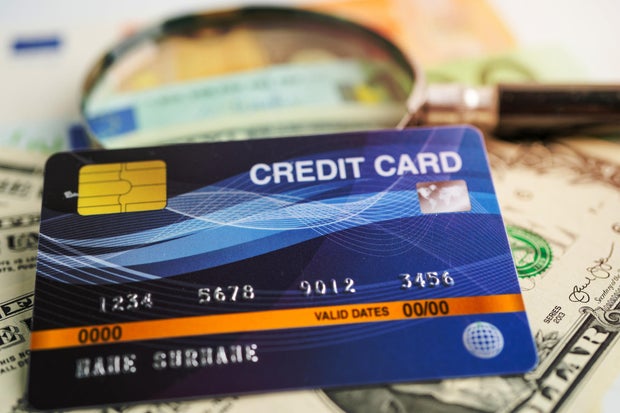 Credit card forbearance offers temporary payment relief, but qualifying requires meeting specific criteria.
Getty Images/iStockphoto
Credit card forbearance offers temporary payment relief, but qualifying requires meeting specific criteria.
Getty Images/iStockphoto
Credit card debt is climbing again, and that means more people are feeling the pinch caused by taking on high-rate debt in today's inflationary environment. According to the most recent data, the total amount of credit card debt nationwide reached a record high of $1.21 trillion in the second quarter of 2025, a clear indicator of how big the issue has become. Meanwhile, the average credit card rate remains near 22%, meaning balances can grow quickly for anyone carrying a balance, and especially for those who are at risk of or are actively missing payments.
If you're struggling to keep up with your monthly card payments, credit card forbearance might be the lifeline you're looking for. The option allows borrowers to pause or reduce their payments temporarily without triggering late fees or a hit to their credit, but lenders typically have specific eligibility rules if you want to enroll, and not everyone qualifies. So, how exactly can you get approved for credit card forbearance right now — and what should you do if you're unable to take advantage of this debt relief option? That's what we'll explain below.
Find out what types of credit card debt relief you may qualify for today.
How to qualify for credit card forbearance this September
Credit card forbearance is essentially a temporary arrangement that allows you to pause or reduce payments for a limited time without facing immediate penalties. Unlike debt forgiveness, forbearance doesn't erase what you owe. Rather, it gives you extra time to get your finances in order without the immediate pressure of making full monthly payments.
While it varies by issuer, the forbearance qualification process generally centers around demonstrating a legitimate financial hardship. You may qualify if you've experienced a job loss or reduction in income, with many credit card issuers requiring proof of unemployment or significantly reduced hours to approve forbearance. Documentation like termination letters, reduced pay stubs or unemployment benefit statements can strengthen your case.
Unexpected financial emergencies also open the door to forbearance consideration. Facing genuine unexpected expenses, like major medical bills, emergency home repairs or other sudden financial shocks, can help you qualify. Still, the keyword here is "unexpected." Routine expenses or poor budgeting typically won't meet the threshold.
Your payment history also typically plays a crucial role in approval decisions. Credit card issuers are more likely to approve forbearance if you were previously a reliable customer but have recently fallen behind due to a hardship. This means borrowers who maintained good standing until their recent financial difficulties have a better shot at approval than those with a history of late payments.
Perhaps most importantly, credit card forbearance isn't something that happens automatically. You need to contact your credit card company directly, explain your situation and ask about available hardship programs. You'll usually have to explain your hardship when you do and provide evidence that you can repay the issuer once the temporary assistance ends, which is typically within 12 months.
Learn more about the debt relief options you can take advantage of now.
What options do I have if I don't qualify for credit card forbearance?
If you find that you're ineligible for credit card forbearance this September, you still have several paths to consider for managing your credit card debt, including:
- Debt consolidation: Combining multiple high-rate credit cards into one consolidation loan with a lower rate can reduce monthly payments and simplify repayment.
- Debt management: Offered by credit counseling agencies, a debt management plan could lead to credit counselors negotiating with creditors on your behalf to reduce your interest rates and fees while rolling your payments into one monthly obligation.
- Debt forgiveness: In cases of severe financial strain, pursuing debt forgiveness, which involves negotiating a lump-sum settlement that's less than the full balance, can help, though it can affect your credit score and tax burden.
- Hardship programs outside forbearance: Some lenders offer credit card hardship programs that result in modified payment plans, fee waivers or temporary APR reductions, even if official forbearance isn't available.
The bottom line
Credit card forbearance can provide temporary relief for borrowers who are struggling to keep up with today's rising balances and high interest rates. To qualify this September, though, you'll need to clearly demonstrate financial hardship, maintain a solid account history and follow your issuer's documentation and application process closely.
If forbearance isn't an option, debt consolidation, debt management programs and other relief strategies can help you regain control. Whatever path you choose, though, the most important step is to act now rather than letting unpaid balances compound. By acting decisively, you can create breathing room in your budget while keeping your credit intact.
Angelica Leicht is the senior editor for the Managing Your Money section for CBSNews.com, where she writes and edits articles on a range of personal finance topics. Angelica previously held editing roles at The Simple Dollar, Interest, HousingWire and other financial publications.


















































